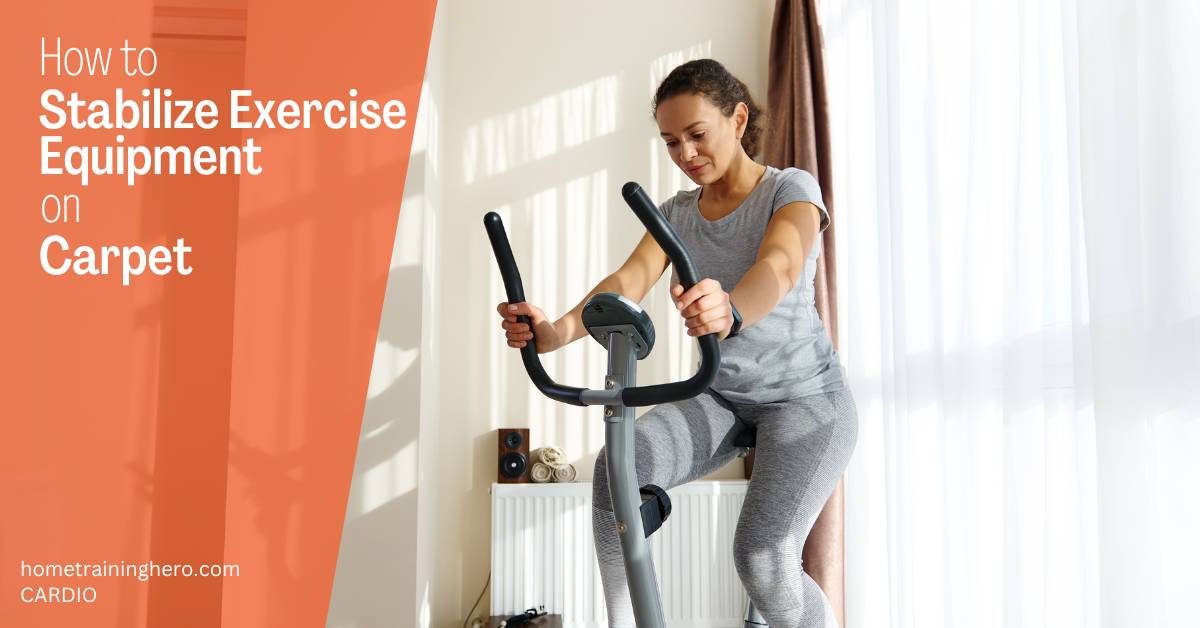When it comes to working out at home, many people prefer to use exercise equipment. However, one common challenge that arises is how to stabilize exercise equipment on carpeted floors.
Unstable or wobbly equipment not only affects the effectiveness of your workout – but can also increase the risk of injuries.
In this article, we will explore how to stabilize exercise equipment on carpet, giving tips and techniques to help you stabilize your exercise equipment – ensuring a safe and enjoyable workout experience.
Contents
The Importance of Stabilization
Before delving into the tips and techniques, it is important to understand why stabilizing exercise equipment on the carpet is crucial.
Stability plays a significant role in maintaining proper form during exercises. When your equipment is unstable, it can lead to unnecessary strain on your body as you try to balance and compensate for the wobbling motion. This can result in poor technique, reduced muscle engagement, and an increased chance of sustaining injuries.
How to Stabilize Exercise Equipment on Carpet
Choosing the Right Equipment
When selecting exercise equipment for use on carpeted floors, it is essential to consider its stability features. Look for equipment that is specifically designed for use on carpet, such as treadmills or stationary bikes with built-in stabilizers or rubberized feet. These features help distribute weight and prevent excessive movement during your workouts.
Additionally, pay attention to the equipment’s weight capacity. Opt for equipment that can support your body weight and any additional loads, such as weights or resistance bands, without compromising stability.
Check the manufacturer’s specifications to ensure the equipment is suitable for use on carpeted surfaces.
Using Equipment Mats
One effective way to stabilize exercise equipment on the carpet is by using equipment mats. These mats provide an extra layer of stability and protection for your carpet. They help distribute the equipment’s weight more evenly and reduce the risk of it sinking or sliding during use.
When choosing an equipment mat, opt for one that is specifically designed for your type of equipment. For example, treadmill mats are designed to withstand the continuous movement and vibrations associated with treadmill usage. Similarly, weight lifting mats offer enhanced durability and shock absorption for activities involving heavy weights.
Leveling the Equipment
Another important aspect of stabilizing exercise equipment on carpet is ensuring it is properly leveled.
Uneven flooring can contribute to instability and wobbling. Here are a few techniques to help you level your equipment:
- Adjustable Feet: Many pieces of exercise equipment, such as stationary bikes or weight benches, come with adjustable feet. Use a leveling tool, like a bubble level, to ensure the equipment is completely level. Adjust the feet until the bubble is centered, indicating a level surface.
- Shims: If your equipment does not have adjustable feet, you can use shims to level it. Shims are small, wedge-shaped objects typically made of plastic or wood. Place the shims under the uneven feet of your equipment until it is leveled.
- Floor Padding: In some cases, the carpet itself may be uneven, leading to instability. Consider using floor padding underneath your carpet to create a more even surface. This can help eliminate minor unevenness and enhance stability.
Secure the Equipment
In addition to leveling, securing your exercise equipment on carpet can provide further stability. There are multiple methods you can use to secure different types of equipment:
Anchoring Mechanisms
Some exercise equipment, such as weight benches or cable machines, may come with anchoring mechanisms. These mechanisms allow you to attach your equipment to a sturdy structure, such as a wall or the floor, preventing it from shifting or tipping over during use. Follow the manufacturer’s instructions to properly anchor your equipment and enhance stability.
Non-Slip Pads
Non-slip pads or gripper pads can be an effective solution for stabilizing equipment that does not have built-in stabilizers or adjustable feet. Place these pads underneath the equipment to create friction and prevent it from sliding or moving during your workouts.
Additional Tips for Stability
Here are a few additional tips to help you stabilize your exercise equipment on carpet:
- Distribute Weight Evenly: When using equipment like treadmills or elliptical machines, make sure to distribute your weight evenly. Avoid leaning excessively on one side, as this can lead to instability and increased stress on the equipment.
- Use Rubber Mats: If you do not have access to equipment-specific mats, you can use rubber mats as an alternative. Rubber mats provide excellent grip and stability, reducing the chances of your equipment slipping or wobbling.
- Regular Maintenance: Keep your exercise equipment in optimal condition by regularly maintaining and inspecting it. Tighten any loose bolts or screws and lubricate moving parts as recommended by the manufacturer. Well-maintained equipment is more likely to remain stable during use.
Final Words
Stabilizing exercise equipment on the carpet is essential for a safe and effective workout experience.
By choosing the right equipment, using mats, leveling the equipment, and implementing additional stability measures, you can ensure that your workouts are stable, secure, and injury-free.
Remember to always follow the manufacturer’s instructions and consult with professionals if needed. With these tips and techniques, you can enjoy a stable and rewarding home workout routine on your carpeted floors.


